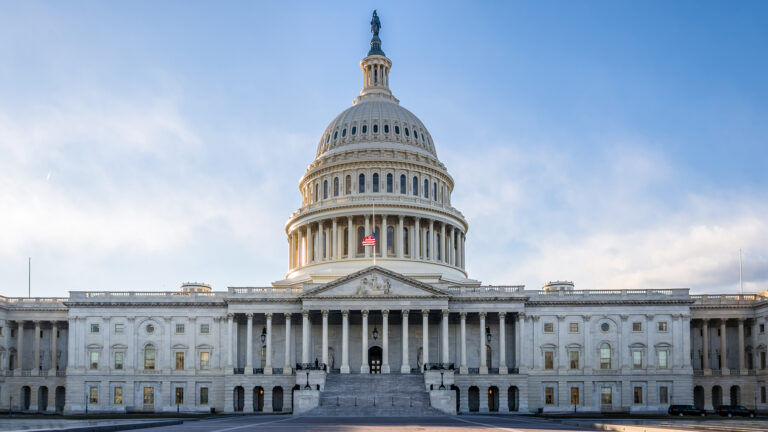By Lauren Bailey
Despite sustainability becoming a more politically charged subject over the last few years, British Columbia’s Municipal Pension Plan isn’t reversing course on the progress it has made to date.
“Responsible investing is really about managing risk in the portfolio,” said Chelsea Kittleson, the plan’s executive director, noting the MPP’s efforts have now evolved to include identifying opportunities in transition-aligned areas.
The MPP is comprised of more than 400,000 members, including firefighters, police officers, and healthcare workers — people who work hard every day to keep communities safe and healthy. She noted roughly 75 cents of every pension dollar paid to members comes from investments, which is why it’s imperative for the plan to measure risk from all angles, including through an environmental, social, and corporate governance lens.
“Really, at the core of it is a risk management approach, and so we just continue to communicate why aligning net-zero goals is ultimately in the best financial interests of the plan. Climate change has the potential to impact financial objectives and touch on all industries over time. There’s been consistent communication about our approach to sustainability, and, as a result, our members and stakeholders have a fairly solid understanding of what it means for the Municipal Pension Plan.”
While the MPP began its responsible investing journey nearly 20 years ago, it’s moving into a more active phase in which it is starting to apply much of the learnings it gleaned along the way.
Its earliest phase was centered around learning and collaboration, said Kittleson, noting education was one of the most critical elements to the ultimate trajectory of the plan’s evolution in the environmental, social, and corporate governance space. Also central to its responsible investing strategy is its partnerships with like-minded advocacy groups that help support the plan’s learnings.
It’s now applying those learnings strategically — integrating asset liability reviews, engaging a responsible investment consultant, and adopting a new investment belief surrounding climate change.
“It provides direction and guidance to the investment manager around the expectations on how the portfolio would be managed. We also made a commitment a number of years ago to provide climate disclosures in the annual report and align those with the International Sustainability Standards Board’s very robust climate disclosures that are updated annually so that members and other interested parties could track the plan’s progress.”
In alignment with the Paris Agreement, the plan has set a goal to be carbon neutral by 2050, with the interim target to reduce the carbon intensity of the portfolio by 55% by 2030 (compared to 2020 levels). As of 2023, the plan’s carbon footprint had been reduced by 23% compared to 2020 levels.
The British Columbia Investment Management Corp., the plan’s investment manager, publishes its own climate action plan, so it takes the reins with regards to strategic stewardship and engagement activities, said Kittleson. BCI engages with the plan’s trustees to understand their exposure to risks and how they’re preparing to offset the effects. The plan delegates to BCI to invest in ESG-related opportunities that offer positive risk-and-return characteristics.
One of the more recent investments the asset manager has introduced to MPP’s portfolio is its sustainable bonds, which provide low-risk returns and help finance projects with positive environmental and social outcomes. As of Dec. 31, 2023, BCI’s total historical participation in sustainable bonds was over C$4.8B, with a goal to reach C$5B by the end of this year.
BCI is also responsible for evaluating and monitoring investments using both ESG and traditional financial analyses. It engages the plan’s portfolio companies and policymakers to uphold good ESG practices and policies and uses ESG-related insights to adapt and improve investment strategies to better support the plan’s investment goal.
“Different ESG factors will have varying levels of materiality. At the board level, in collaboration with our investment manager, the focus is on which factors are most material and how they’re being addressed at a portfolio or company level.”
BCI uses several tools to engage with investee companies, including exercising shareholder voting rights, engaging with companies directly, making policy submissions and sitting on the boards of portfolio companies.
Trusting the DB plan promise
Risk management is always top of mind for Kittleson, considering Canadians continue to contend with the ups and downs of an uncertain economy.
She wants MPP’s members to know that DB pension plans have been built for times like these.
“It’s based on a formula which is your salary and the years of service, and that pension payment is not beholden to the day-to-day fluctuations of the stock market. The [MPP] is well-funded and built for the long term, so we have ample liquidity and a diversified portfolio. We’re not going to be forced under pressure to sell assets at inconvenient times.”
Indeed, in 2024, the plan grew its assets under management to C$86B from C$77B in 2023.
As of Dec. 2023, the plan had a funding ratio of 105.3% and a surplus of C$3.76B. As well, the plan returned 7.7% by the end of fiscal 2023, with a five-year annualized return of 7.8%. The MPP is expected to release its full 2024 report later in the fall of this year.
As the daughter of a retired schoolteacher, Kittleson knows well the security and sense of relief a DB pension plan can provide plan members. “When I see my mom and the stability her pension is giving her and the dignity that it provides for the life that she is leading, that is a perspective and an insight that is deeply informing.”
Kittleson’s career hails from a variety of areas within capital markets, including public equities, fixed income, venture capital, investment management, and treasury. “I take all of those experiences, and it really has prepared me to support the Municipal Pension Plan”
The plan’s investment approach takes a very long-term view focused on maintaining a diversified portfolio that has ample liquidity to help navigate any short-term shocks in the economy, said Kittleson. “Our board is confident in the strategy, and we’re not anticipating having to make any short-term adjustments in light of what’s happening in the economy.”
Her team regularly performs health checks on the plan and meets quarterly with the investment manager to get updates on everything from risk and liquidity metrics to valuations. They also perform asset-liability reviews on a regular basis to ensure they stay well abreast and ahead of any necessary changes that may be coming down the pike and so the plan doesn’t have to make immediate short-term adjustments.













